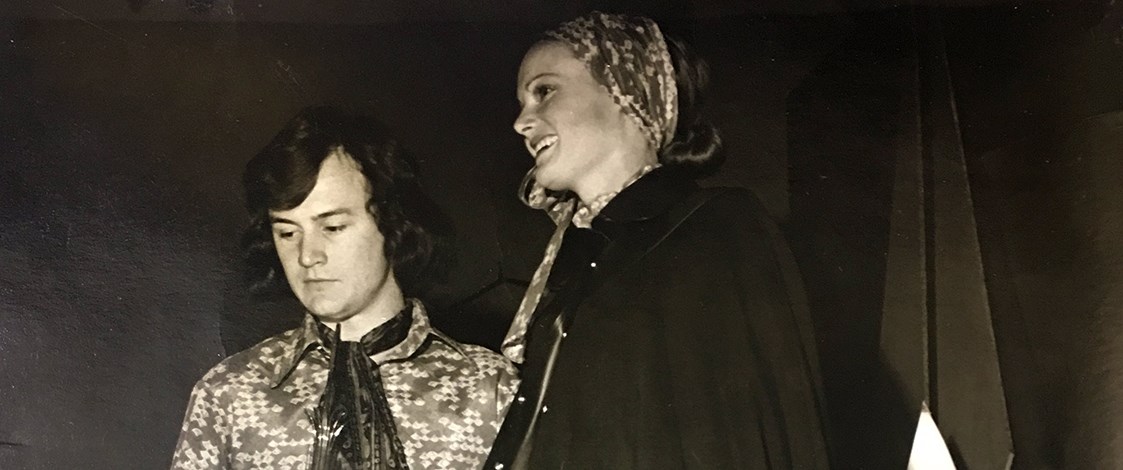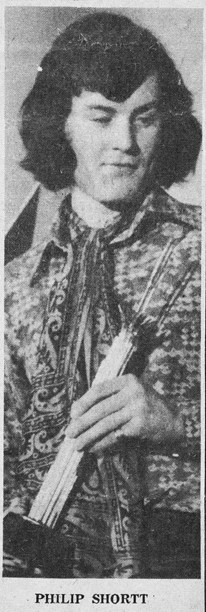Stories
Philip Shortt

Wanganui born Philip Shortt, a graduate of the fashion programme at Wellington Polytechnic, credits the Benson & Hedges Fashion Design Awards with helping launch an exciting career in fashion that has taken him all over the world.
Philip entered the awards three times, (1969-1971) all with success, receiving merit awards in 1969 and 1970 and taking home the Supreme Award in 1971 for a garment entered in the day wear section of the event.

Philipp Shortt with his Benson & Hedges Fashion Design Award and award winning garment modelled by Jenny Higgs. Photo by Wallace Britton.
The garment consisted of a black wool jersey and leather flowing midi-length cape, gaucho pants, and a silk headscarf in brick, cream and mauve tones. The cape was lined with the same silk as the headscarf and the ensemble was modelled by Jenny Higgs.

Four garments from the 1971 Benson & Hedges Fashion Design Awards, including Philip's design (centre), which won the Supreme Award.
Winning the award was instrumental in Philip receiving a Queen Elizabeth II (QEII) Scholarship to undertake post-graduate studies at the Fashion School, Royal College of Arts (RCA) in London. In a letter to Josephine Brodie, the then organiser of the Benson & Hedges Fashion Design Awards, Philip wrote about his entry to the RCA: "The head of the Fashion school offered me a place after an interview, and I feel very thrilled because everyone in the industry here [New Zealand] regards it as the No 1 school for fashion design."

Philip Shortt won a Queen Elizabeth II (QEII) Scholarship to undertake post-graduate studies at the Fashion School, Royal College of Arts (RCA) in London.
And indeed it was, key members of the British Pop Art Movement had trained at the RCA during the 1950s and 1960s leading to a fluid exchange of ideas between art and fashion. By the 1960s the Fashion School at the RCA had cemented itself as the place to be if you wanted to be in fashion. Under the leadership of Janey Ironside the fashion school produced such well-known alumni as Ossie Clarke and Zandra Rhodes.
After graduating Philip went to Rome and worked with Valentino as a design assistant. He later returned to London and worked for the British design house Mansfield. Highlights of his time at Mansfield included creating a collection of colour related separates, dressing Margaret Thatcher, and designing the women’s uniform for the British constabulary - the uniform is still worn by female officers today.
From London Philip moved to the United States where he joined an American sportswear company resourcing all over the world. He later went into partnership with a Manhattan company manufacturing sportswear. Today Philip works as an interior designer for wealthy clientele in Greenwich.
Text by Natalie Smith. Banner image of Philipp Short garments, including the Supreme award winning garment in the 1971 award Benson & Hedges Fashion Design Awards.
Last published November 2016.